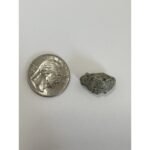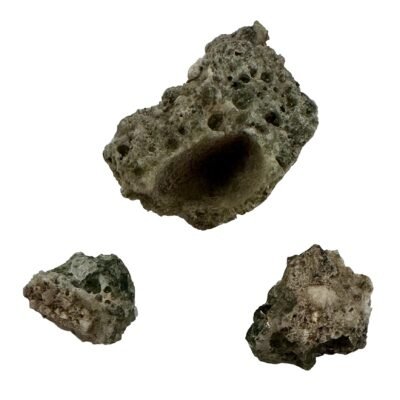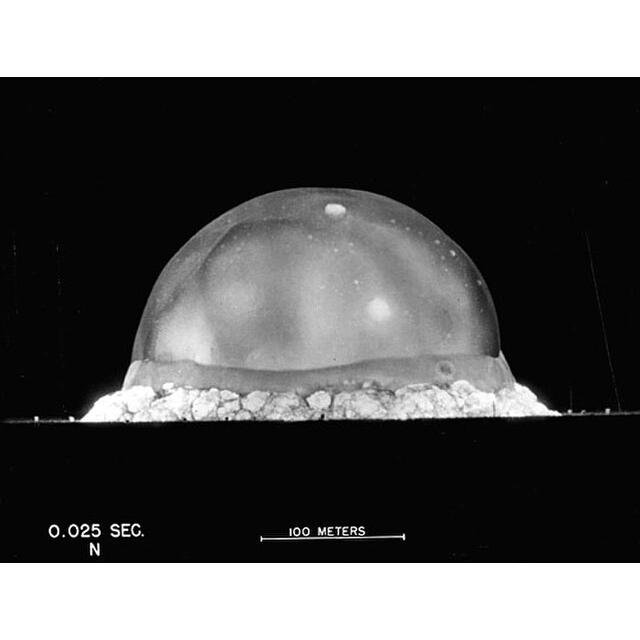Product details
This Trinitite rock is from the first test of the nuclear bomb in New Mexico. The glass formed is a beautiful green color with sand still encapsulated around it. This great specimen measures 22mm and shows an incredible glass bubble on one side. The glass has a greenish appearance mixed within the fused sand. This specimen contains many natural gas bubbles.
Trinitite, also known as Alamogordo Glass or Atomic Glass, is a unique substance formed as a result of the detonation of nuclear weapons. It gained its name from the Trinity test, the first-ever detonation of a nuclear device, conducted on July 16, 1945, near Alamogordo, New Mexico, during the Manhattan Project.
Trinitite forms when the intense heat generated by a nuclear explosion melts the surrounding materials, typically sand or soil. The molten material rapidly cools to form a glassy substance, incorporating elements from the detonation site, such as soil, minerals, and traces of radioactive elements like plutonium and uranium. This process gives trinitite its characteristic appearance, with colors ranging from green to blue and brown.

The properties of trinitite can vary depending on factors such as the composition of the surrounding materials and the temperature reached during the explosion. However, common characteristics include a predominant silica content, giving it a glassy texture, and varying degrees of radioactivity due to the presence of radioactive contaminants.
Trinitite holds both historical and scientific significance. As a relic of the Trinity test, it serves as a tangible reminder of humanity’s entry into the atomic age and the destructive power of nuclear weapons. Scientifically, trinitite provides insights into material behavior under extreme conditions and is studied to understand processes such as glass formation and the effects of radiation on materials.
However, trinitite also raises ethical and legal concerns. Collection of trinitite from the Trinity test site is prohibited by law due to environmental regulations, as the area is now part of the White Sands Missile Range. Nonetheless, trinitite artifacts collected before these regulations are traded and sold on the collectors’ market, prompting reflection on the broader implications of nuclear technology and its impact on society and the environment.

Prehistoric 101 (Learn about fossils, minerals, and meteorites)
What is a Meteorite? Nickel Iron
What is a Meteorite?
What is a Tektite:























There are no reviews yet.